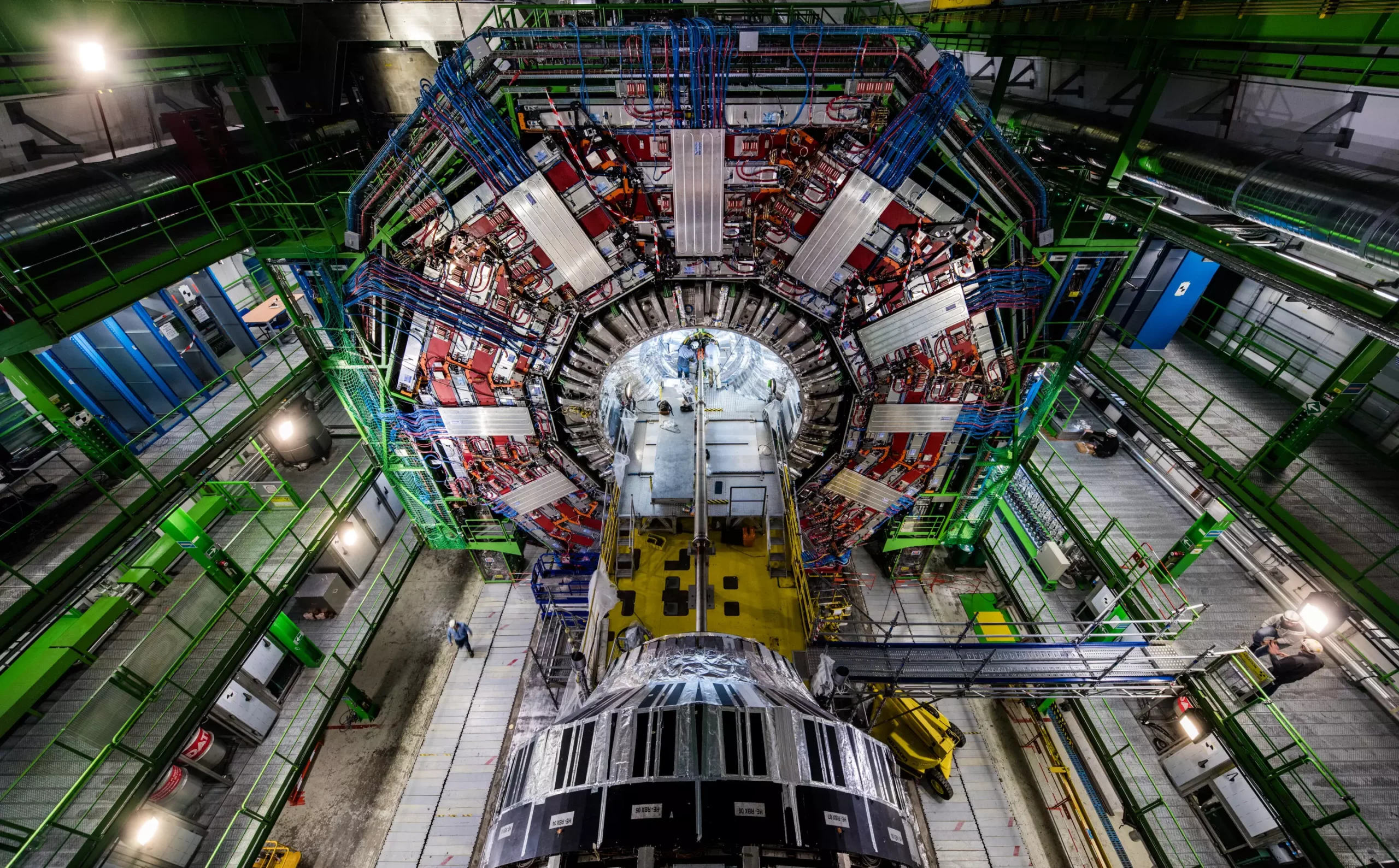In the realm of particle physics, significant discoveries often hinge on precision measurements that unravel the mysteries of the universe. A recent groundbreaking finding by the Compact Muon Solenoid (CMS) at the Large Hadron Collider (LHC) has provided new insights into the mass of the W boson, a fundamental particle that plays a critical role in mediating the weak force. This measurement, publicly announced in 2023, is notable for its unprecedented accuracy, marking a pivotal development in our understanding of the Standard Model of particle physics.
The W boson, discovered in 1983, has been the subject of extensive study across multiple experimental setups. Prior to the CMS revelation, more than a decade of analysis had been devoted to scrutinizing its mass, following an unexpected result from the Collider Detector at Fermilab (CDF) experiment in 2022. The CMS team’s recent findings have effectively resolved lingering uncertainties regarding the boson’s characteristics, reinforcing predictions made by the Standard Model.
Utilizing state-of-the-art analytical techniques, CMS researchers sifted through a staggering 300 million events captured during the LHC’s 2016 operational run, complemented by 4 billion simulated interactions. This meticulous database allowed them to reconstruct over 100 million W bosons, ultimately determining that the W boson’s mass is approximately 80,360.2 ± 9.9 megaelectron volts (MeV). This measurement aligns closely with the Standard Model’s expectation of 80,357 ± 6 MeV, underscoring the reliability of theoretical frameworks underpinning particle physics.
The surprisingly high precision of the CMS W boson measurement—0.01%—is comparable to gauging the length of a pencil to within a mere thousandth of an inch. This level of accuracy is particularly profound when considering that the W boson, being a fundamental particle, does not possess physical dimensions in the conventional sense. As highlighted by Patty McBride, a prominent physicist at Fermilab and former CMS spokesperson, the intricate nature of the experimental design and data analysis contributed significantly to achieving this remarkable precision.
At the heart of CMS’s unique capabilities are specialized detectors designed to track fundamental particles like muons, in addition to an exceptionally strong solenoid magnet responsible for bending the paths of charged particles. This design enables heightened sensitivity, which is critical for measuring the W boson’s mass—a feat that has challenged physicists due to its inherent complexities.
Addressing the Challenges: Neutrino Decay and Data Simulation
The analysis of the W boson poses daunting challenges, primarily due to the fact that one of its decay products, the neutrino, eludes direct detection. Such a short-lived particle complicates the measurement process as physicists must rely on indirect methods to tease out the properties of the W boson from its decay products. As physicist Josh Bendavid noted, to counter this obstacle, researchers creatively simulated billions of LHC collision events before working with actual data. This preliminary simulation proved crucial for accounting for complexities in the detector’s performance that could skew results.
Moreover, the team needed to navigate a multitude of theoretical assumptions concerning the conditions within protons during collisions and the behavior of the W boson itself. This blend of precision measurements and theoretical considerations is described by McBride as a delicate art, reflecting the intricate interplay between theory and experimental data in particle physics research.
A New Analytical Framework: Real Data Utilization
A noteworthy aspect of the CMS team’s analysis rests on their innovative technique that utilizes only real data from W boson decays to enhance the precision of theoretical inputs. This advancement liberated researchers from the uncertainties introduced by prior reliance on the closely related but not identical Z boson as a reference point. The analysis also involved scrutinizing around 100 million decay tracks from established particles, honing the CMS detector’s accuracy on an unprecedented scale.
As physicists delve deeper into the subatomic world, it becomes increasingly vital to approach experimental challenges with fresh perspectives and methodologies. The CMS study exemplifies how commitment to innovation and collaborative insights can advance the field.
These remarkable findings not only cement the credibility of the Standard Model but also provide a foundation for exploring new particles and potentially undiscovered forces. As Anadi Canepa articulated, even the slightest deviations in the W boson’s mass could imply new physics beyond current understanding, paving the way for exciting future investigations.
The CMS’s enhanced measurement of the W boson stands as a significant triumph in particle physics, reflecting the ingenuity and dedication of researchers to decode the universe’s most profound secrets. As fundamental physicists continue to build on these results, we can expect that the journey into the world of elementary particles will reveal ever-more intricate truths about the fabric of reality itself.


Leave a Reply